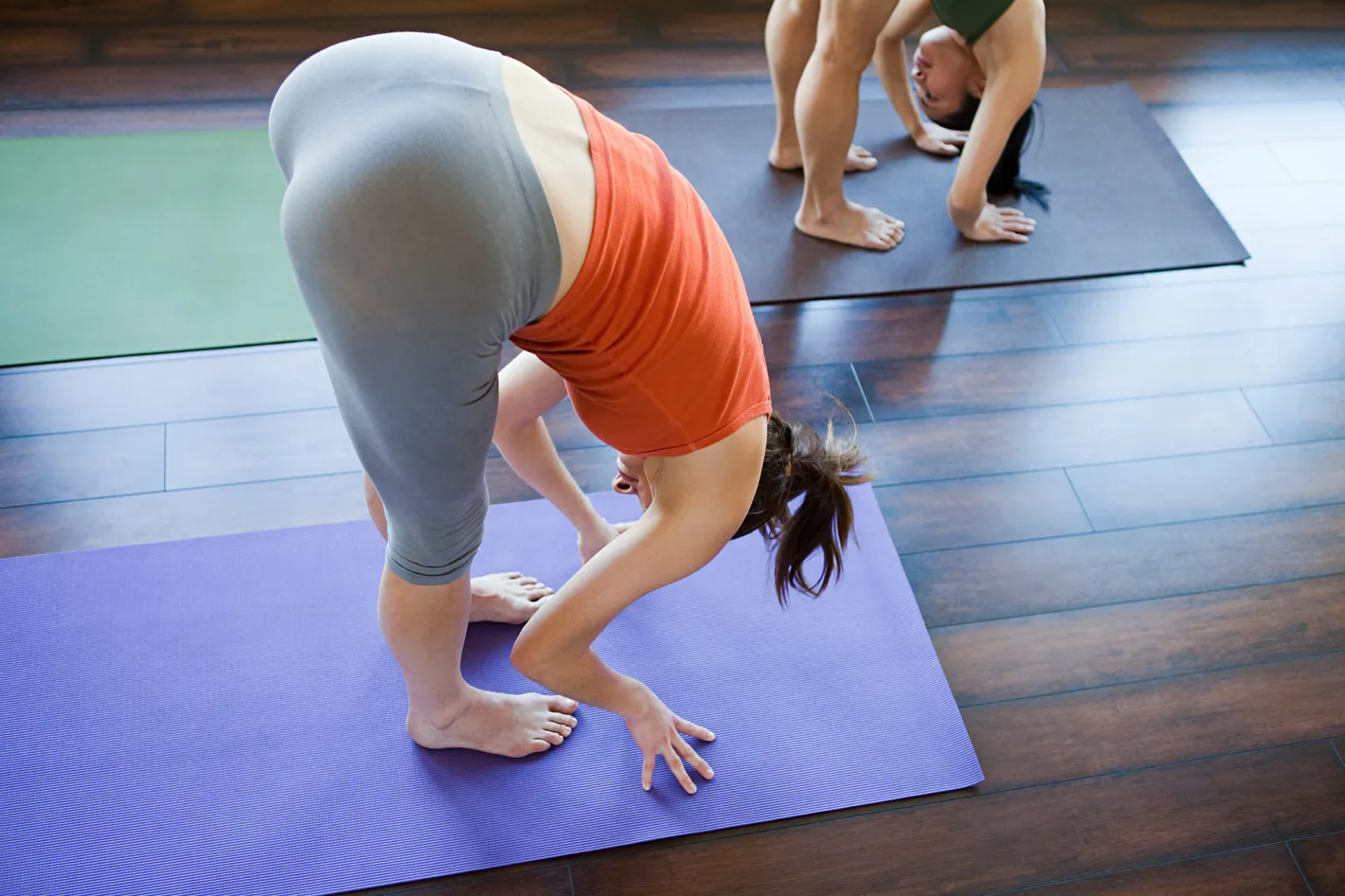I. Introduction

In today’s fast-paced world, where stress levels are high and physical fitness is often neglected, yoga has emerged as a popular practice for maintaining both physical and mental well-being. This ancient practice originated in India and has been passed down through generations, with its benefits now recognized globally. Regularly practicing yoga can yield various positive outcomes, such as improved strength, flexibility, and balance, as well as reduced stress and increased mental clarity.
However, to truly reap the benefits of yoga, it is essential to consider the frequency of your practice. Just like any other form of exercise or wellness routine, the frequency of practicing yoga plays a significant role in achieving desired results. This article will delve into the factors that should be considered when determining how often you should practice yoga, based on your personal goals and needs, as well as your time and schedule constraints.
II. Factors to Consider in Establishing Yoga Practice Frequency
A. Personal Goals and Needs

- Health and Fitness Goals: Everyone has different health and fitness goals. Whether you aim to lose weight, build strength, or improve flexibility, yoga can help you achieve these goals. Consider what you want to achieve through your yoga practice and align your frequency accordingly.
- Stress Management and Relaxation: Yoga is well-known for its ability to reduce stress and promote relaxation. If your primary goal is to manage stress and achieve mental well-being, you may need to practice yoga more frequently than someone who primarily focuses on physical fitness.
B. Time and Schedule
- Assessing Available Time: Evaluate your daily routine and responsibilities to determine how much time you can realistically dedicate to yoga. It is crucial to find a balance between your yoga practice and other commitments so that you can maintain consistency.
- Incorporating Yoga into Daily Routine: To establish a regular yoga practice, it is beneficial to incorporate it into your daily routine. This may involve waking up earlier in the morning or dedicating a specific time slot in the evening. By integrating yoga into your daily activities, it becomes easier to commit to regular practice.
III. Recommended Yoga Practice Frequency for Different Goals
A. Beginners and General Well-being
- Starting with 1-2 Sessions per Week: If you are new to yoga or have general wellness goals, it is recommended to start with 1-2 sessions per week. This frequency allows your body to adapt to the practice gradually and avoids overexertion.
- Gradually Increasing Frequency: As you become more comfortable and gain experience, you can gradually increase your frequency to 3-4 sessions per week. This progressive approach ensures that your body and mind can adapt to the increased demands of your practice.
B. Physical Fitness and Flexibility
- 2-3 Sessions per Week for Visible Results: If your primary goal is to enhance physical fitness and flexibility, it is advisable to practice yoga 2-3 times per week. This frequency allows your body to build strength, improve flexibility, and notice visible results over time.
- Combining Yoga with Other Physical Activities: To achieve well-rounded physical fitness, consider combining your yoga practice with other forms of exercise. Incorporating cardiovascular activities, such as running or swimming, along with yoga can provide a comprehensive workout routine.
C. Stress Management and Mental Wellness
- Daily Practice for Consistent Stress Relief: To effectively manage stress and promote mental wellness, it is ideal to practice yoga daily. Consistency is key when it comes to reaping the benefits of yoga for stress reduction. Even if you only have a few minutes to spare, incorporating a short yoga practice into your day can significantly impact your overall well-being.
-
Tailoring Practice Length to Personal Needs: The duration of your daily yoga practice can vary depending on your schedule and personal needs. Some individuals may prefer shorter, more frequent sessions, while others may benefit from longer, focused practices. Experiment with different lengths and find what works best for you.
IV. Listening to Your Body and Adjusting Practice Frequency

A. Recognizing Signs of Overexertion
- Muscle Fatigue and Soreness Yoga practice should push us out of our comfort zones but not to the point of causing excessive muscle fatigue and soreness. Pay attention to how your body feels during and after a yoga session. If you notice prolonged muscle soreness or a feeling of extreme exhaustion, it may be a sign that you are overexerting yourself.
- Mental Exhaustion and Lack of Motivation Yoga is not just a physical practice but also a mental one. If you find yourself mentally drained or lacking motivation to practice, it could be a sign that you need to adjust your practice frequency. It’s essential to strike a balance between challenging yourself and giving your mind time to rest and rejuvenate.
B. Modifying Frequency Based on Individual Response
- Taking Rest Days and Practicing Active Recovery Rest days are crucial for allowing your body and mind to recover and rebuild. They help prevent injuries and burnout. Incorporate rest days into your yoga routine and focus on gentle practices like restorative or yin yoga. Active recovery, such as light stretching or walking, can also be beneficial on rest days to promote blood circulation and aid in muscle recovery.
- Adjusting Practice Frequency during Intense Periods There may be periods in your life when external factors demand more time and energy, such as work deadlines, family commitments, or illness. During these intense periods, it’s essential to adapt your yoga practice frequency to accommodate these demands. It may mean reducing the frequency or duration of your sessions temporarily to prevent additional stress.
V. Maintaining Consistency and Sustainability
A. Setting Realistic Goals and Expectations

- Avoiding Overcommitment It’s important to set realistic goals and avoid overcommitting yourself to a practice frequency that isn’t sustainable in the long run. Assess your time availability, energy levels, and other commitments when determining how often you can realistically practice yoga. Consistency is key, so it’s better to start with a lower frequency and gradually increase it over time if possible.
- Being Patient with Progress Yoga is a lifelong journey, and progress takes time. It’s crucial to be patient with yourself and not expect immediate results. Avoid comparing your progress to others and focus on your own growth. Celebrate small victories and stay committed to your practice, knowing that each time you step onto the mat, you are doing something beneficial for your well-being.
B. Incorporating Variety in Practice
- Exploring Different Yoga Styles and Classes To maintain interest and prevent boredom, explore different yoga styles and classes. Each style offers unique benefits and challenges. Trying new styles helps to keep your practice fresh and exciting. It also allows you to target different areas of your body and broaden your overall yoga experience.
- Creating a Balanced Routine Incorporate a variety of yoga practices into your routine, such as strength-building classes, flexibility-focused sessions, and mindfulness-based practices. Balancing different types of yoga helps to work your body and mind in various ways, preventing overemphasis on one aspect and promoting overall well-being and sustainability in your practice.
In conclusion, listening to your body is paramount in determining your yoga practice frequency. Recognizing signs of overexertion, such as muscle fatigue, soreness, mental exhaustion, or lack of motivation, helps you make informed decisions about adjusting your practice. Maintaining consistency and sustainability involves setting realistic goals, avoiding overcommitment, being patient with progress, and incorporating variety into your routine. Remember, yoga is a lifelong journey, and finding the right balance in your practice frequency is essential for achieving long-term physical and mental well-being.



